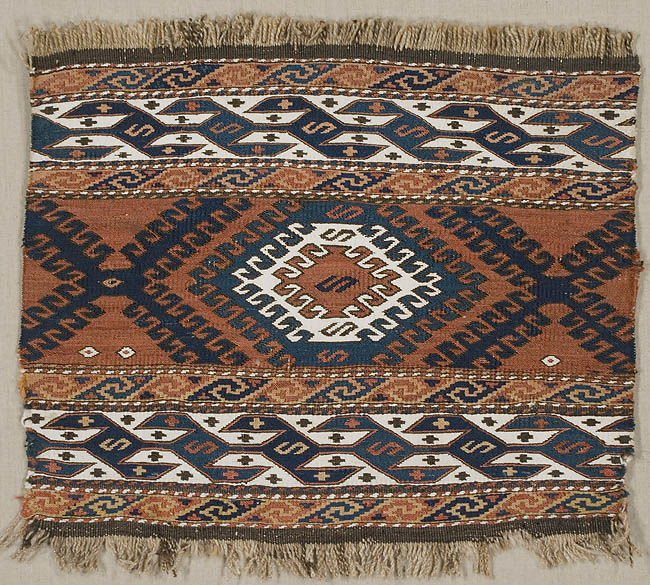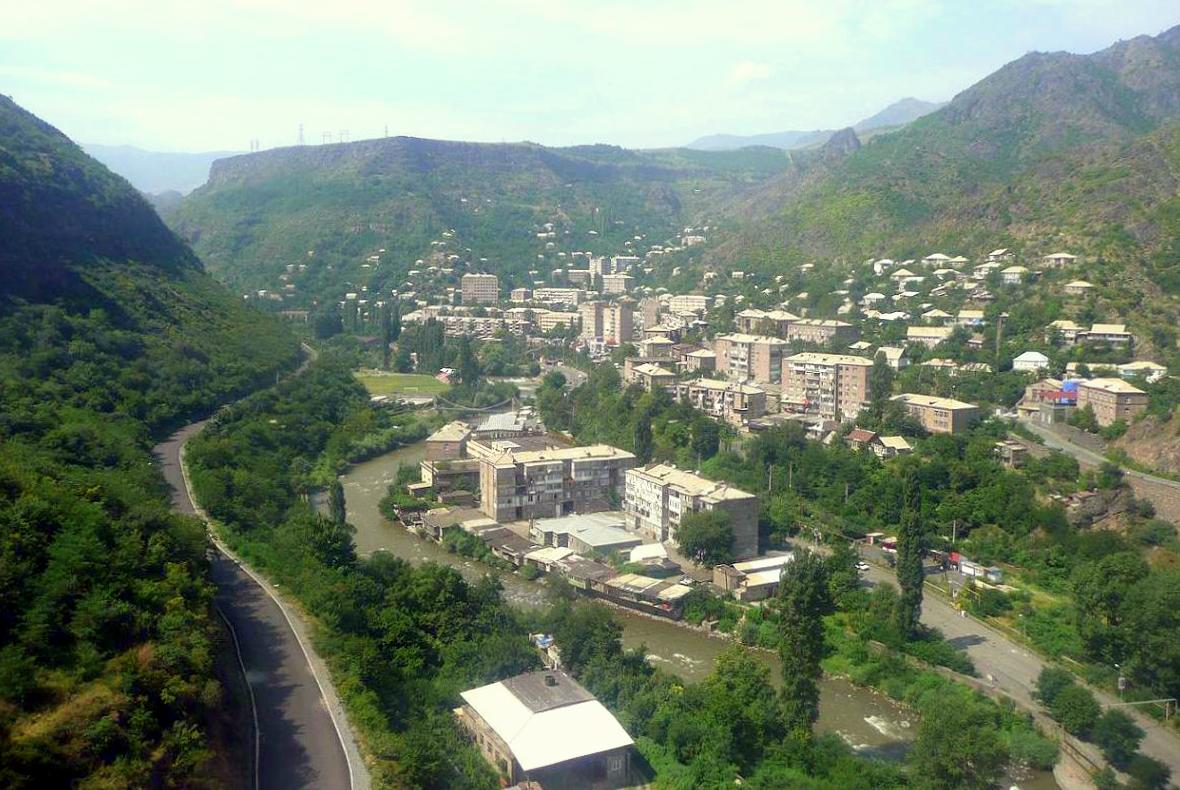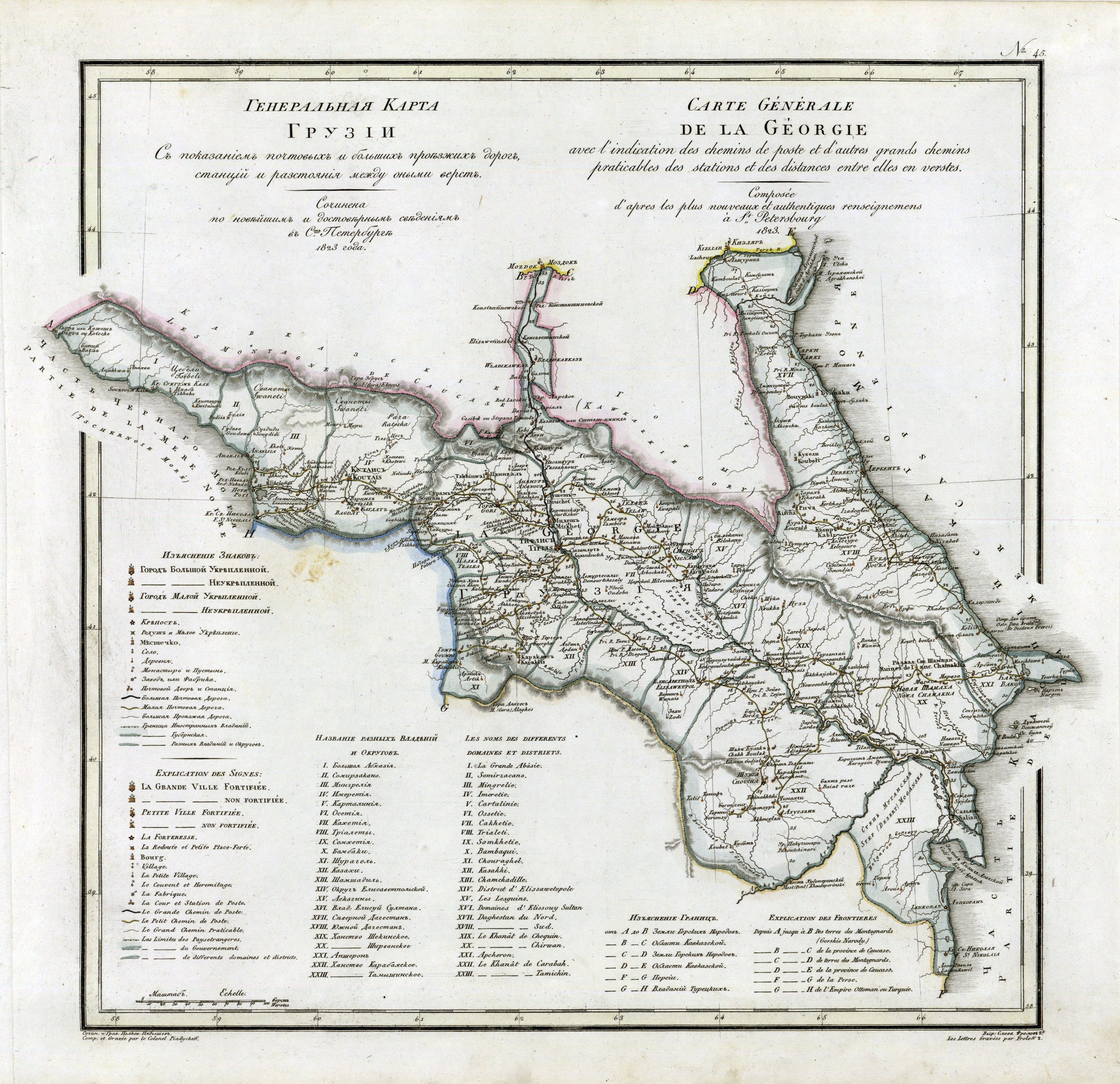|
Borchaly Uezd
The Borchaly uezd, was a county (''uezd'') of the Tiflis Governorate of the Caucasus Viceroyalty of the Russian Empire, and later of the independent and Soviet republics of Georgia. Its administrative center was the town of Shulavery (present-day Shaumiani).Brockhaus and Efron EncyclopaediaTiflis Governorate The area of the uezd roughly corresponded to the contemporary Lori Province of Armenia and the Kvemo Kartli region of Georgia. History The Debed river, formerly known as the ''Borchala'' (), gave the name of the ''uezd'', however, the region was also known as ''Borchalo'' (ბორჩალო) in Georgian, ''Borchalu'' (Բորչալու) in Armenian, and ''Borchali'' () in Azerbaijani. The Turkic locals were resettled to the Debed river valley through the policy of Shah Abbas I (1571-1629) after his successful campaigns against the Kingdoms of Kartli and Kakheti that led to the formation of several Qizilbash khanates. The region was later reincorporated into the Kingdom ... [...More Info...] [...Related Items...] OR: [Wikipedia] [Google] [Baidu] |
List Of Viceroyalties Of The Russian Empire
This is a list of viceroyalties (''namestnichestvo'') of the Russian Empire. Under Catherine II Later {, class='wikitable sortable' !label !capital !dates , - , Caucasus Viceroyalty , Tiflis Tbilisi ( ; ka, თბილისი ), in some languages still known by its pre-1936 name Tiflis ( ), is the capital and the largest city of Georgia, lying on the banks of the Kura River with a population of approximately 1.5 million pe ... , 1844–1882, 1904–1917 , - , Far Eastern Viceroyalty , , 1903-1905 Subdivisions of the Russian Empire ... [...More Info...] [...Related Items...] OR: [Wikipedia] [Google] [Baidu] |
Debed
The Debed ( hy, Դեբեդ) or Debeda ( ka, დებედა) is a river in Armenia and Georgia. It also serves as a natural boundary between Armenia and Georgia at the village Sadakhlo, Georgia. It is long, and has a drainage basin of . The river originates in Armenia and is formed at the confluence of the Dzoraget and Pambak. It ends in Georgia where it feeds into the Khrami, a tributary of Kura. See also * * |
27th Division (United Kingdom)
The 27th Division was an infantry division of the British Army raised during the Great War, formed in late 1914 by combining various Regular Army units that had been acting as garrisons about the British Empire. The division spent most of 1915 on the Western Front in France before moving to Salonika where it remained with the British Salonika Army for the duration of the war. In 1916 its commander Hurdis Ravenshaw was captured by an Austrian submarine whilst sailing to England. In 1918 in Salonika the division took part in the Battle of Doiran. It carried out occupation duties in the Caucasus in the post-war before being withdrawn from the region in 1919. Order of battle The division was composed of the following units: ; 80th Brigade: * 2nd Battalion, King's Shropshire Light Infantry * 3rd Battalion, King's Royal Rifle Corps * 4th Battalion, King's Royal Rifle Corps (''left June 1918'') * 4th Battalion, Rifle Brigade (Prince Consort's Own) * Princess Patricia's Canadian Light ... [...More Info...] [...Related Items...] OR: [Wikipedia] [Google] [Baidu] |
Neutral Zone (territorial Entity)
A neutral zone is a delimited zone bordering at least one of the states that has agreed to set up a neutral territory. This has occurred in the past and/or present for: * Neutral Ground (Louisiana), a disputed area between Spanish Texas and the United States' newly acquired Louisiana Purchase, from 1806 to 1821 * Neutral Moresnet, a 19th-century neutral zone between the United Kingdom of the Netherlands (and later Belgium) and Prussia (and later the German Empire) *in the colonial era, the neutral zone between Thailand and French Indochina, 25 kilometres wide (roughly 15.5 miles) on the east bank of the Mekong, was placed under French control but formally remained under Thai sovereignty. *the Saudi–Iraqi neutral zone *the Saudi–Kuwaiti neutral zone *the neutral zones between Morocco and Ceuta and Melilla * Antarctica * United Nations Conciliation Commission's ''Government House'' in Jerusalem, which existed as a mediation center after the 1948 Arab–Israeli War * ... [...More Info...] [...Related Items...] OR: [Wikipedia] [Google] [Baidu] |
Alaverdi, Armenia
Alaverdi ( hy, Ալավերդի, ), is a town and municipal community in the Lori Province at the northeastern part of Armenia, near the border with Georgia. It is located at the only direct rail link between Armenia and Georgia. Situated at the bottom of the Debed river gorge, Alaverdi is an important commercial and industrial centre in northern Armenia. As of the 2011 census, the population of the town is 13,343, down from 26,300 reported in 1989. Currently, the town has an approximate population of 11,000 as per the 2016 official estimate. Etymology Historically, the area around Alaverdi was known as Manasgomer or Manits Gom during the medieval period. Starting from the 17th century, the settlement became known as Alaverdi, derived from the name of a 17th-century Turkic ''Borçalı'' tribe leader ''Allahverdi Mollaoğlu Tarkhan''. However, Alaverdi was formed as a settlement known as Manes (from historical Manits Gom) only in 1899, when the copper smelter was opened near ... [...More Info...] [...Related Items...] OR: [Wikipedia] [Google] [Baidu] |
Armeno-Georgian War
The Armeno-Georgian War was a short territorial dispute, border dispute that was fought in December 1918 between the newly-independent Democratic Republic of Georgia and the First Republic of Armenia, largely over the control of former districts of Tiflis Governorate, in Borchaly uezd, Borchaly (Lori Province, Lori) and Akhalkalaki Municipality, Akhalkalaki. At the end of World War I, Armenia and Georgia had both declared their independence from the Russian Empire. Georgia controlled Lori and Akhalkalaki, both of which were populated primarily by Armenians. The border dispute turned into open military involvement on 7 December 1918. Armenian forces made substantial gains and came within 30 miles of the Georgian capital, Tiflis, when the Allies of World War I, Allied representatives in the city intervened to demand a ceasefire. Skirmishes continued until the war finally came to an end at midnight on 31 December. A neutral zone, under Allied supervision, was declared in the Lori an ... [...More Info...] [...Related Items...] OR: [Wikipedia] [Google] [Baidu] |
First Republic Of Armenia
The First Republic of Armenia, officially known at the time of its existence as the Republic of Armenia ( hy, Հայաստանի Հանրապետութիւն), was the first modern Armenian state since the loss of Armenian statehood in the Middle Ages. The republic was established in the Armenian-populated territories of the disintegrated Russian Empire, known as Eastern Armenia or Russian Armenia. The leaders of the government came mostly from the Armenian Revolutionary Federation (ARF or Dashnaktsutyun). The First Republic of Armenia bordered the Democratic Republic of Georgia to the north, the Ottoman Empire to the west, Persia to the south, and the Azerbaijan Democratic Republic to the east. It had a total land area of roughly 70,000 km2, and a population of 1.3 million. The Armenian National Council declared the independence of Armenia on 28 May 1918. From its very onset, Armenia was plagued with a variety of domestic and foreign issues. A humanitarian crisis emerged ... [...More Info...] [...Related Items...] OR: [Wikipedia] [Google] [Baidu] |
Russian Revolution
The Russian Revolution was a period of Political revolution (Trotskyism), political and social revolution that took place in the former Russian Empire which began during the First World War. This period saw Russia abolish its monarchy and adopt a socialist form of government following two successive revolutions and a bloody civil war. The Russian Revolution can also be seen as the precursor for the other European revolutions that occurred during or in the aftermath of WWI, such as the German Revolution of 1918–1919, German Revolution of 1918. The Russian Revolution was inaugurated with the February Revolution in 1917. This first revolt focused in and around the then-capital Petrograd (now Saint Petersburg). After major military losses during the war, the Russian Army had begun to mutiny. Army leaders and high ranking officials were convinced that if Nicholas II of Russia, Tsar Nicholas II abdicated, the domestic unrest would subside. Nicholas agreed and stepped down, usher ... [...More Info...] [...Related Items...] OR: [Wikipedia] [Google] [Baidu] |
Georgia Governorate
The Georgian Governorate (russian: Грузинская губерния; ka, საქართველოს გუბერნია) was one of the '' guberniyas'' of the Caucasus Viceroyalty of the Russian Empire. Its capital was Tiflis (Tbilisi). It was divided into uyezds of Gori, Dusheti (Its center was Tbilisi), Lori, Signagi and Telavi. The Georgia governorate was established in 1801 following the Russian annexation of the Kingdom of Kartli-Kakheti. In 1840 it was expanded to form the Georgia-Imeretia Governorate, incorporating the territory of the Imeretia Oblast (Its center was Kutaisi and was constituted from uzeyds of Kutaisi, Vakha, Rakvta (Raczyn during Russian rule), Sachkhere, Cheri and Bagdati) and Armenian Oblast (Its center was Erivan Yerevan ( , , hy, Երևան , sometimes spelled Erevan) is the capital and largest city of Armenia and one of the world's oldest continuously inhabited cities. Situated along the Hrazdan River, Yerevan is the admini ... [...More Info...] [...Related Items...] OR: [Wikipedia] [Google] [Baidu] |
Georgia Within The Russian Empire
The country of Georgia became part of the Russian Empire in the 19th century. Throughout the early modern period, the Muslim Ottoman and Persian empires had fought over various fragmented Georgian kingdoms and principalities; by the 18th century, Russia emerged as the new imperial power in the region. Since Russia was an Orthodox Christian state like Georgia, the Georgians increasingly sought Russian help. In 1783, Heraclius II of the eastern Georgian kingdom of Kartli-Kakheti forged an alliance with the Russian Empire, whereby the kingdom became a Russian protectorate and abjured any dependence on its suzerain Persia. The Russo-Georgian alliance, however, backfired as Russia was unwilling to fulfill the terms of the treaty, proceeding to annex the troubled kingdom in 1801, and reducing it to the status of a guberniya, Russian region (Georgia Governorate). In 1810, the western Georgian kingdom of Kingdom of Imereti, Imereti was annexed as well. Russian rule over Georgia was ev ... [...More Info...] [...Related Items...] OR: [Wikipedia] [Google] [Baidu] |
Kingdom Of Kartli-Kakheti
The Kingdom of Kartli-Kakheti ( ka, ქართლ-კახეთის სამეფო, tr) (1762–1801 ) was created in 1762 by the unification of two eastern Georgian kingdoms of Kartli and Kakheti. From the early 16th century, according to the 1555 Peace of Amasya, these two kingdoms were under Iranian control. In 1744, Nader Shah granted the kingship of Kartli to Teimuraz II and that of Kakheti to his son Heraclius II, as a reward for their loyalty. When Nader Shah died in 1747, Teimuraz II and Heraclius II capitalized on the instability in Iran proper, and declared ''de facto'' independence. After Teimuraz II died in 1762, Heraclius succeeded him as ruler of Kartli, thus unifying the two. Heraclius was able, after centuries of Iranian suzerainty over Georgia, to guarantee the autonomy over his kingdom throughout the chaos that had erupted following Nader Shah's death. He became the new Georgian king of a politically united eastern Georgia for the first time in ... [...More Info...] [...Related Items...] OR: [Wikipedia] [Google] [Baidu] |
Khanates Of The Caucasus
The khanates of the Caucasus, also known as the Azerbaijani khanates, Persian khanates, or Iranian khanates, were various provinces and principalities established by Persia (Iran) on their territories in the Caucasus (modern-day Azerbaijan Republic, Armenia, Georgia and Dagestan) from the late Safavid to the Qajar dynasty. The Khanates were mostly ruled by Khans of Turkic ( Azerbaijani) origin and were vassals and subjects of the Iranian Shah (English: ''King''). The khans neither had territorial or religious unity, nor an ethnic/national identity. They were mostly interested in perserving their positions and income. Persia permanently lost a part of these khanates to Russia as a result of the Russo-Persian Wars in the course of the 19th century, while the others were absorbed into Persia. List The khanates that soon emerged after the death of Nader Shah in 1747 were the following:; * Baku Khanate (1806 occupied and annexed to Russia) * Derbent Khanate (1806 occupied and ... [...More Info...] [...Related Items...] OR: [Wikipedia] [Google] [Baidu] |








